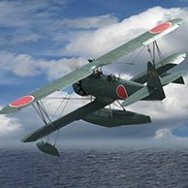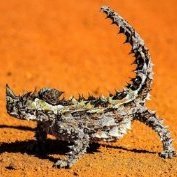-
Posts
349 -
Joined
-
Last visited
-
Days Won
1
VintageEagle last won the day on June 27 2021
VintageEagle had the most liked content!
Recent Profile Visitors
2,780 profile views
-
 VintageEagle reacted to a post in a topic:
1/32 Trumpeter EE Lightning F.Mk.6 XS904
VintageEagle reacted to a post in a topic:
1/32 Trumpeter EE Lightning F.Mk.6 XS904
-
Hi, I read in the 1986 flight manual that the MSIP was only done on F-15C 84-0001 and later, but I am not sure if later also F-15C serials before 84-0001 were updated to MSIP standard. Does anyone know? I believe the early F-15C still had the same control stick like the F-15A and that the new stick was installed only with the MSIP upgrade. Thanks, Roger
-
 thierry laurent reacted to a post in a topic:
F-16A Block 1 Decals?
thierry laurent reacted to a post in a topic:
F-16A Block 1 Decals?
-
Thank you. OK, that would be an option. I contacted Daco in the meantime and they replied that an extended version of the stencils decal sheet is almost ready for printing and should become available soon. So, I’ll wait for the new set then. Thanks, Roger
-
Thanks Thierry. I checked the Davo website but it says the decals are sold out unfortunately. Maybe I can find them at ebay with some patience. Thank you. That’s a good idea! I found these: would they be right for a Block 1 F-16A as well? https://www.super-hobby.co.uk/products/Lockheed-Martin-F-16-Viper-Stencils-Data.html Thanks, Roger
-
Thank you all! I could only find a Microscale sheet for 1/72. I found, however, stencils for early F-16: https://www.cybermodeler.com/hobby/decals/syhart/decal_syhart_32905.shtml Tony, I agree that using other sheets from 1980s F-16 is probably the easiest way. I’ll check what is available. Thanks! Roger
-
 VintageEagle reacted to a post in a topic:
F-16A Block 1 Decals?
VintageEagle reacted to a post in a topic:
F-16A Block 1 Decals?
-
 VintageEagle reacted to a post in a topic:
F-16A Block 1 Decals?
VintageEagle reacted to a post in a topic:
F-16A Block 1 Decals?
-
 VintageEagle reacted to a post in a topic:
F-16A Block 1 Decals?
VintageEagle reacted to a post in a topic:
F-16A Block 1 Decals?
-
Hi, I have been trying to find 1/32 decals for a USAF Block 1 F-16A. The only ones I could find are the kit decals if the old Revell or Ertl kits. Are there any modem decals available? Thanks! Roger
-
 VintageEagle reacted to a post in a topic:
1/32 F-15 resin landing gear
VintageEagle reacted to a post in a topic:
1/32 F-15 resin landing gear
-
 VintageEagle reacted to a post in a topic:
Tamiya F-16 Aggressor, Kicked Up a Notch, April 11/24: Lighting Details
VintageEagle reacted to a post in a topic:
Tamiya F-16 Aggressor, Kicked Up a Notch, April 11/24: Lighting Details
-
 VintageEagle reacted to a post in a topic:
Tamiya F-16 Aggressor, Kicked Up a Notch, April 11/24: Lighting Details
VintageEagle reacted to a post in a topic:
Tamiya F-16 Aggressor, Kicked Up a Notch, April 11/24: Lighting Details
-
 VintageEagle reacted to a post in a topic:
Tamiya F-16 Aggressor, Kicked Up a Notch, April 11/24: Lighting Details
VintageEagle reacted to a post in a topic:
Tamiya F-16 Aggressor, Kicked Up a Notch, April 11/24: Lighting Details
-
 VintageEagle reacted to a post in a topic:
Tamiya F-16 Aggressor, Kicked Up a Notch, April 11/24: Lighting Details
VintageEagle reacted to a post in a topic:
Tamiya F-16 Aggressor, Kicked Up a Notch, April 11/24: Lighting Details
-
 zerosystem reacted to a post in a topic:
1/32 F-15 resin landing gear
zerosystem reacted to a post in a topic:
1/32 F-15 resin landing gear
-
Thank you. Indeed, that’s the leg for the F-15E on the picture. I just ordered the one for the F-15C.
-
 VintageEagle reacted to a post in a topic:
1/32 F-15 resin landing gear
VintageEagle reacted to a post in a topic:
1/32 F-15 resin landing gear
-
Thank you for your analysis. I have the Kopecky fuel tanks which are quite heavy, but I’ll get a set and can still measure the weight of all parts before installation. I noticed that the resing gear shown above has a horizontal cylinder attached near the bottom. I only found that on F-15E gears but not the F-15C. Is this correct?
-
Great to have the option for an accurate landing gear for the F-15. They write: The E type nose landing gear will not deform when weighing less than 500 grams(C type less then 350 grams), and will deform slightly when weighing 1,000 grams. The rear landing gear will not deform even if it weighs over 2000 grams. Does anyone know the weight of a Tamiya 1/32 F-15C with some resin parts (roughly)? I’m a bit concerned that the front gear leg will bend over time. Thanks, Roger
-
 chaos07 reacted to a post in a topic:
Revell 1/32 Me 262 A-1a W.Nr. 110958 'White 17' III./EJG 2 - THE COCKPIT
chaos07 reacted to a post in a topic:
Revell 1/32 Me 262 A-1a W.Nr. 110958 'White 17' III./EJG 2 - THE COCKPIT
-
 logan181 reacted to a post in a topic:
Revell 1/32 Me 262 A-1a W.Nr. 110958 'White 17' III./EJG 2 - THE COCKPIT
logan181 reacted to a post in a topic:
Revell 1/32 Me 262 A-1a W.Nr. 110958 'White 17' III./EJG 2 - THE COCKPIT
-
 fab reacted to a post in a topic:
Revell 1/32 Me 262 A-1a W.Nr. 110958 'White 17' III./EJG 2 - THE COCKPIT
fab reacted to a post in a topic:
Revell 1/32 Me 262 A-1a W.Nr. 110958 'White 17' III./EJG 2 - THE COCKPIT
-
 TAG reacted to a post in a topic:
Revell 1/32 Me 262 A-1a W.Nr. 110958 'White 17' III./EJG 2 - THE COCKPIT
TAG reacted to a post in a topic:
Revell 1/32 Me 262 A-1a W.Nr. 110958 'White 17' III./EJG 2 - THE COCKPIT
-
 TAG reacted to a post in a topic:
Revell 1/32 Me 262 A-1a W.Nr. 110958 'White 17' III./EJG 2 - THE COCKPIT
TAG reacted to a post in a topic:
Revell 1/32 Me 262 A-1a W.Nr. 110958 'White 17' III./EJG 2 - THE COCKPIT
-
 AlanG reacted to a post in a topic:
Revell 1/32 Me 262 A-1a W.Nr. 110958 'White 17' III./EJG 2 - THE COCKPIT
AlanG reacted to a post in a topic:
Revell 1/32 Me 262 A-1a W.Nr. 110958 'White 17' III./EJG 2 - THE COCKPIT
-
 LSP_Kevin reacted to a post in a topic:
Revell 1/32 Me 262 A-1a W.Nr. 110958 'White 17' III./EJG 2 - THE COCKPIT
LSP_Kevin reacted to a post in a topic:
Revell 1/32 Me 262 A-1a W.Nr. 110958 'White 17' III./EJG 2 - THE COCKPIT
-
 Fanes reacted to a post in a topic:
Revell 1/32 Me 262 A-1a W.Nr. 110958 'White 17' III./EJG 2 - THE COCKPIT
Fanes reacted to a post in a topic:
Revell 1/32 Me 262 A-1a W.Nr. 110958 'White 17' III./EJG 2 - THE COCKPIT
-
Finally, I found time to take photos (sorry for the low quality, I only had an iPhone 13Pro available). The cockpit is basically complete except for the wiring/tubes on the backside of the main instrument panel. The first few photos show the cockpit from all angles without the cockpit sill installed, the second last photo shows the cockpit with the sill loosely placed on top of it and the last photo shows the other side of the cockpit tube. I added a hand-written marking that was applied by the sub-supplier (presumably an internal serial number) as well as an instruction decal. the former can be seen on e.g. the NASM Me 262 or German Museum Me 262, the latter on wartime photos of Me 262 W.Nr. 111711 taken in the US shortly after the war. Note that the small crack near the firewall will be completely hidden once the cockpit tube is installed inside the fuselage and therefore I didn't bother to fill it. Changes I made since I showed the last pictures include: OXYGEN HOSE: Added the oxygen hose to the left console KG 13B BUTTON & WIRING: Installed a new accurate-to-scale button on the left side of the control grip for charging the MK 108s (made using a punch & die tool) as well as yellow wiring from the terminal box and side button to the base of the control column. RUDDER ASSEMBLY: I shortened the rudder assembly as it was too wide straight out of the box and added the straps that were made out of fabric and a metal clip to fix the length. I also had to move it slightly more to the firewall to have the assembly in the right relative position to the rest of the cockpit. This involved some surgery and a lot of dry fitting. Dry fitting was generally a must during the assembly so that all parts fit together well (in particular for the fit of the firewall to the cockpit tube). I am glad that this fiddly part is now successfully completed and that I can move on to the next part: riveting. In parallel, I have already started with the nose gear assembly. I am a slow builder and regularly switch from building models to writing on my next book, so it could take a while again before my next update.
-

F-16C Aggressor 86-273 - What Block?
VintageEagle replied to VintageEagle's topic in Aviation Discussion & Research
OK, it seems I was wrong and confused the P&W nozzle with a GE nozzle. And Kirk’s explanation regarding the landing gear lights makes sense. Sorry about the confusion! -

F-16C Aggressor 86-273 - What Block?
VintageEagle replied to VintageEagle's topic in Aviation Discussion & Research
Yes, you are right, I confused the photos in my earlier post, but in my most recent one I show photos of the same airframe, but once with P&W and once with GE. -

F-16C Aggressor 86-273 - What Block?
VintageEagle replied to VintageEagle's topic in Aviation Discussion & Research
Thank you for your explanation. 86-273 was built with a P&W engine see photo below), but apparently received the GE engine around 2022. That’s a good point about the nose gear landing lights. I’m not sure if also received the heavyweight landing gear. It would be interesting to know all changes and whether the Tamiya F-16C Thunderbirds or the Block 50 kit were the better one with the least number of required modifications. A GE engine aggressor is definitely a very attractive bird. Later: -

F-16C Aggressor 86-273 - What Block?
VintageEagle replied to VintageEagle's topic in Aviation Discussion & Research
Yes, but do GE engines work with the NSI and is that (GE engine, later landing gear and NSI) a new Block designation? -
VintageEagle started following F-16C Aggressor 86-273 - What Block?
-

F-16C Aggressor 86-273 - What Block?
VintageEagle replied to VintageEagle's topic in Aviation Discussion & Research
Thank you all. Here is a recent photo. It seems the upgrade was done around 2022. Another one here: https://www.jetphotos.com/photo/10588645




.thumb.png.84c5d3a464f2dd83f0ac37a5aac81ec8.png)